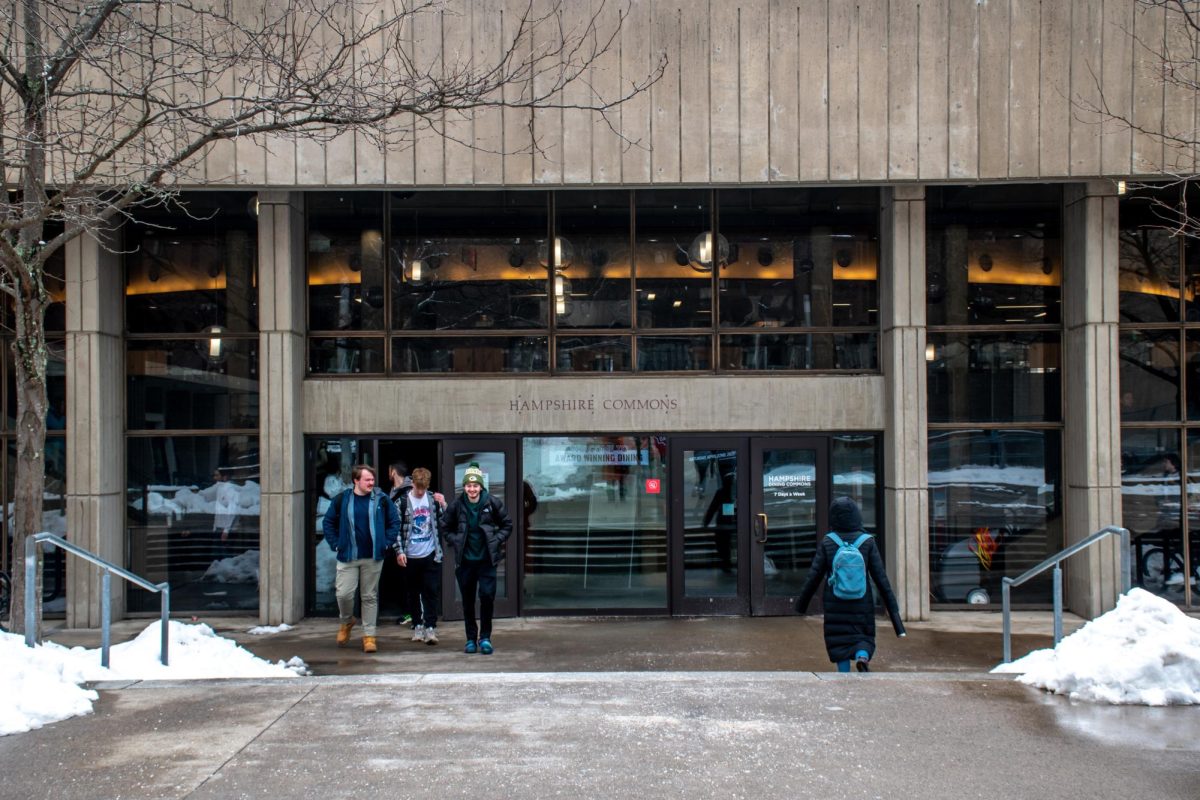
The University of Massachusetts has recently reached a consent agreement with the United States Environmental Protection Agency that will allow for the safe containment and eventual removal of a number of polychlorinated biphenyl-contaminated windows in the Lederle Graduate Research Center.
“We’re kind of cutting new ground here, because other universities are faced with similar problems and this is a way to manage the PCBs in place while being provided with a period of time to remediate them,” said Donald A. Robinson, the University’s Director of Environmental Health and Safety.
Robinson said the agreement “is the first of its kind that I’m aware of.”
The EPA regulates the use of PCBs, which were detected in the caulking between the windowpanes and the metal channels into which they are inserted.
“When you find PCBs, the EPA regulations are such that you must remediate it,” Robinson said.
To fix the problem, the University has agreed to encapsulate and monitor the contaminated material through both swipe sampling and air-quality measurements, which will continue to be performed by Woodard & Curran.
The process also involves the application of a sealant to the glazing, which will then be covered by a metal strip. It is expected to cost about $500,000.
“Unlike asbestos where you can manage the material in place, with PCBs that’s not an allowable option,” Robinson said.
PCBs saw widespread usage in building construction from the late 1950s up until they were deemed a health risk and banned in 1979. The chemical was added to caulking material to provide it with elasticity and prevent it from stiffening and cracking.
According to Robinson, the EPA sets the public health levels for PCBs in indoor air for people age 19 and older at 450 nanograms per cubic meter.
The test data from LGRC Tower A and the low-rise, which was published by private environmental monitoring firm Woodard & Curran, show PCB rates below this level with an average of 213 in 2008 and 71 in 2009.
“Although all testing indicates that we are below EPAs levels for both indoor air or surface contamination, the glazing sealant contains PCBs at concentration greater than 50 parts per million in a non-totally enclosed manner,” he said. “Therefore, even though there is no elevated exposure to PCBs, the presence of the material is considered an unauthorized use and, per EPA regulations, must be remediated.”
The results will be reported to the EPA and posted on the UMass EHS website, according to Robinson.
The issue of PCB contamination in buildings on campus first came to light during a project to waterproof the Lederle building in 2006. During the renovation, elevated levels of PCB were discovered in the caulking material between the concrete façade and the building.
The Lederle building was constructed in the 1970s, and thus Tower A fell within the window of unregulated PCB use. Towers B and C were constructed later and are not considered a hazard.
The University will also be removing and replacing about 900 windows in the complex’s Tower A and low-rise building. This will take place gradually over a period of 15 years and will cost about $3 million, according to a recent University press release.
He said that the window removal project would also be incorporated into renovation projects that have already been planned.
Tom Relihan can be reach at [email protected].












